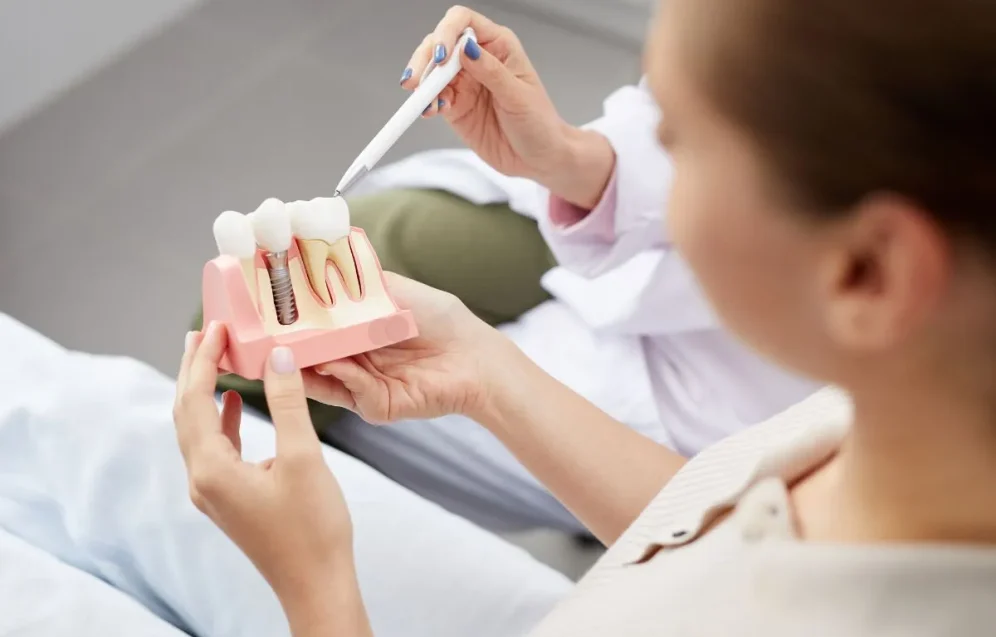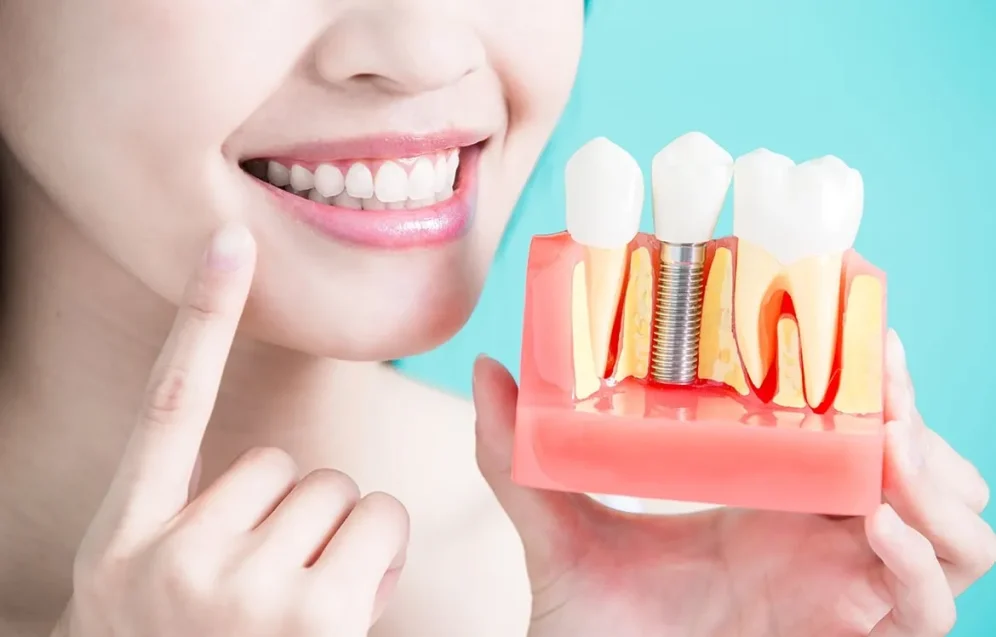Single Tooth Implants vs Bridges: Complete Comparison Guide
Single Tooth Implants vs Bridges: Complete Comparison Guide
When you lose a single tooth, you face an important decision: should you choose a dental implant or a bridge? Both single tooth implants vs bridges offer effective solutions for replacing missing teeth, but they work in fundamentally different ways and have distinct advantages and disadvantages.
At Picasso Dental Clinic, we help patients understand the differences between single tooth implants vs bridges to make the best choice for their long-term oral health. This comprehensive guide will help you understand everything you need to know about these two popular tooth replacement options.
Understanding Single Tooth Implants vs Bridges
Before diving into the comparison of single tooth implants vs bridges, let’s understand how each treatment works.
What Is a Single Tooth Implant?
A single tooth implant replaces both the root and crown of your missing tooth. The treatment involves:
- A titanium post surgically placed into your jawbone
- A healing period of 3-6 months for the implant to integrate with your bone
- An abutment attached to connect the implant to the crown
- A custom-made crown that looks and functions like your natural tooth
The implant becomes a permanent part of your jawbone through a process called osseointegration, creating a stable foundation that can last a lifetime.
What Is a Dental Bridge?
A dental bridge replaces the visible part of your missing tooth by anchoring a false tooth (pontic) to the adjacent natural teeth. The process includes:
- Preparation of the two teeth next to the gap by removing enamel
- Taking impressions to create the bridge
- Placement of a temporary bridge while the permanent one is made
- Cementing the final bridge, which consists of three connected crowns
The bridge literally “bridges” the gap where your tooth is missing, using your natural teeth as support pillars.
Detailed Comparison: Single Tooth Implants vs Bridges
When evaluating single tooth implants vs bridges, several key factors should influence your decision.
Longevity and Durability
Single Tooth Implants:
- Can last a lifetime with proper care
- Success rate of 95-98% over 10 years
- The crown may need replacement every 15-20 years
- No impact on surrounding teeth
Dental Bridges:
- Average lifespan of 10-15 years
- May need replacement 2-3 times in a patient’s lifetime
- Success depends on the health of supporting teeth
- Places additional stress on adjacent teeth
Impact on Adjacent Teeth
Single Tooth Implants:
- Preserve healthy adjacent teeth completely
- No alteration needed to neighboring teeth
- Actually help maintain the position of surrounding teeth
- Independent function doesn’t affect other teeth
Dental Bridges:
- Require removing healthy enamel from adjacent teeth
- Supporting teeth become more vulnerable to decay and fracture
- If one supporting tooth fails, the entire bridge fails
- Can lead to problems with healthy teeth over time
Bone Health and Facial Structure
Single Tooth Implants:
- Stimulate jawbone like natural tooth roots
- Prevent bone loss in the area of the missing tooth
- Maintain facial structure and prevent shrinkage
- Help preserve the height and width of your jawbone
Dental Bridges:
- Provide no stimulation to the underlying jawbone
- Bone loss continues under the bridge
- Can lead to changes in facial appearance over time
- May require bone grafting if implants are considered later
Oral Hygiene and Maintenance
Single Tooth Implants:
- Clean exactly like natural teeth with brushing and flossing
- No special cleaning techniques required
- Easy access for routine dental care
- Less risk of decay and gum disease
Dental Bridges:
- Require special flossing techniques under the bridge
- Need interdental brushes or water flossers for proper cleaning
- More challenging to maintain good oral hygiene
- Higher risk of decay and gum disease around supporting teeth
Cost Analysis: Single Tooth Implants vs Bridges
Understanding the true cost comparison of single tooth implants vs bridges requires looking beyond initial expenses.
Initial Treatment Costs
Single Tooth Implant:
- Initial cost: $800-1,500 in Vietnam
- May require bone grafting: Additional $300-800
- Total initial investment: $800-2,300
Dental Bridge:
- Initial cost: $600-1,200 in Vietnam
- Includes preparation of three teeth
- Total initial investment: $600-1,200
Long-Term Cost Analysis
20-Year Cost Projection:
Single Tooth Implant:
- Initial implant: $1,200
- Crown replacement (15 years): $400
- Total 20-year cost: $1,600
Dental Bridge:
- Initial bridge: $900
- First replacement (12 years): $900
- Potential supporting tooth problems: $500-1,500
- Total 20-year cost: $2,300-3,400
Insurance Coverage Considerations
- Dental bridges often have better insurance coverage
- Implant coverage is improving but varies by provider
- Many patients find long-term value despite higher initial costs
- Consider total lifetime costs, not just upfront expenses
Treatment Timeline: Single Tooth Implants vs Bridges
The time required for treatment differs significantly between single tooth implants vs bridges.
Single Tooth Implant Timeline
Initial Consultation and Planning (1 week):
- Comprehensive examination and X-rays
- 3D imaging for precise planning
- Medical history review
- Treatment plan development
Implant Placement (Day 1):
- Minor surgical procedure (1-2 hours)
- Local anesthesia for comfort
- Temporary tooth if needed
- Post-operative care instructions
Healing Period (3-6 months):
- Osseointegration process
- Regular check-ups to monitor healing
- Temporary restoration if in visible area
- No restrictions on most daily activities
Crown Placement (Week 16-26):
- Impressions for custom crown
- Abutment placement
- Final crown fitting and adjustment
- Final bite adjustment and polishing
Dental Bridge Timeline
Initial Consultation (1 week):
- Examination of supporting teeth
- X-rays and treatment planning
- Discussion of options and expectations
Tooth Preparation (Week 2):
- Preparation of adjacent teeth
- Impressions for bridge fabrication
- Temporary bridge placement
- Color matching for natural appearance
Final Bridge Placement (Week 3-4):
- Removal of temporary bridge
- Fitting and adjustment of permanent bridge
- Cementation and final bite check
- Oral hygiene instructions
Aesthetic Considerations
Both single tooth implants vs bridges can provide excellent cosmetic results, but there are differences.
Single Tooth Implant Aesthetics
Natural Emergence: The crown emerges from the gums like a natural tooth, creating the most lifelike appearance.
Gum Health: Proper implant placement maintains healthy gum contours around the restoration.
Long-term Stability: No changes in appearance over time due to bone loss.
Color Matching: Can be perfectly matched to adjacent teeth.
Dental Bridge Aesthetics
Seamless Integration: Well-made bridges blend naturally with existing teeth.
Immediate Results: No healing period affects the appearance.
Potential Challenges: Over time, gum recession around the bridge may create gaps or dark lines.
Color Consistency: All three crowns can be matched for uniform appearance.
Ideal Candidates: Single Tooth Implants vs Bridges
Understanding who is a good candidate for each treatment helps in the decision-making process.
Ideal Candidates for Single Tooth Implants
Excellent Candidates:
- Healthy adults with good bone density
- Non-smokers or those willing to quit
- Good oral hygiene habits
- Realistic expectations about treatment timeline
- Healthy adjacent teeth that don’t need crowns
Factors That May Affect Candidacy:
- Insufficient bone density (may require bone grafting)
- Certain medical conditions affecting healing
- Heavy smoking habits
- Unrealistic timeline expectations
- Young patients with incomplete jaw development
Ideal Candidates for Dental Bridges
Excellent Candidates:
- Patients needing crowns on adjacent teeth anyway
- Those who prefer faster treatment completion
- Patients with medical conditions preventing surgery
- Budget-conscious patients seeking initial savings
- Those with insufficient bone for implants
Factors That May Affect Candidacy:
- Healthy adjacent teeth (would be unnecessarily altered)
- Poor oral hygiene habits
- High decay rate or gum disease
- Young patients (bridges may need multiple replacements)
Age Considerations in Treatment Choice
Age plays a role in deciding between single tooth implants vs bridges.
Young Adults (20-35)
Implant Advantages:
- Lifetime solution that grows with them
- Preserves healthy teeth for life
- Better long-term investment
- Maintains bone health for decades
Bridge Considerations:
- May need multiple replacements over lifetime
- Healthy teeth unnecessarily altered
- Potential for complications with supporting teeth
Middle-Aged Adults (35-55)
Balanced Consideration:
- Both options viable depending on individual circumstances
- Consider overall oral health and adjacent tooth condition
- Lifestyle factors and healing capacity
- Financial planning for long-term costs
Older Adults (55+)
Bridge Advantages:
- Faster completion of treatment
- No surgical procedures required
- May align with other needed dental work
- Predictable timeline and results
Implant Considerations:
- Excellent option if in good health
- May require more careful evaluation
- Consider healing capacity and medical status
- Still provide long-term benefits
Special Considerations for International Patients
For patients considering treatment at Picasso Dental Clinic in Vietnam, additional factors apply to single tooth implants vs bridges.
Treatment Planning for Travel
Single Tooth Implants:
- Initial placement: 1 week stay
- Return visit for crown: 3-6 months later
- Total visits: 2 trips to Vietnam
- Extended healing time between visits
Dental Bridges:
- Complete treatment: 2-3 weeks
- Single extended stay in Vietnam
- No return visits required
- Immediate full function
Cost Advantages in Vietnam
Significant Savings:
- 60-80% cost savings compared to Western countries
- High-quality materials and techniques
- English-speaking staff
- Modern facilities and technology
Value Comparison:
- Implants in Vietnam cost less than bridges in many Western countries
- Opportunity to combine treatment with vacation
- World-class dental care at affordable prices
Post-Treatment Care
Follow-up Considerations:
- Local dentist coordination for check-ups
- Emergency contact information
- Detailed care instructions
- Warranty and guarantee policies
Making Your Decision: Single Tooth Implants vs Bridges
Choosing between single tooth implants vs bridges involves weighing multiple factors specific to your situation.
Questions to Consider
Health and Age:
- Are you a good candidate for surgery?
- What is your expected lifespan for the restoration?
- Do you have any medical conditions affecting healing?
Financial Considerations:
- What are your budget constraints for initial treatment?
- Have you considered long-term costs?
- What does your insurance cover?
Lifestyle Factors:
- How important is treatment speed to you?
- Are you willing to return for multiple appointments?
- Do you maintain excellent oral hygiene?
Adjacent Teeth:
- Are your neighboring teeth healthy and strong?
- Do they need crowns or other treatment anyway?
- Would you prefer to preserve them unchanged?
When to Choose Single Tooth Implants
Consider implants when you:
- Have healthy adjacent teeth you want to preserve
- Want the longest-lasting solution
- Are willing to invest in lifetime tooth replacement
- Can commit to the treatment timeline
- Want to maintain jawbone health
When to Choose Dental Bridges
Consider bridges when you:
- Need faster treatment completion
- Have adjacent teeth that need crowns anyway
- Cannot have surgery due to medical conditions
- Prefer the initial cost savings
- Want predictable, immediate results
Why Choose Picasso Dental for Your Treatment
Whether you choose single tooth implants vs bridges, Picasso Dental Clinic provides exceptional care for both treatments.
Our Expertise
Experienced Specialists: Our prosthodontists and oral surgeons have extensive experience with both implants and bridges.
Advanced Technology: 3D imaging, digital impressions, and CAD/CAM technology ensure precise, beautiful results.
International Standards: We follow international protocols for safety and quality in all procedures.
Patient-Centered Care
Comprehensive Consultation: We thoroughly evaluate your case and explain all options clearly.
Personalized Treatment Plans: Every treatment plan is customized to your specific needs and goals.
English-Speaking Staff: Clear communication throughout your treatment journey.
Quality and Value
Premium Materials: We use only high-quality implants and bridge materials from leading manufacturers.
Transparent Pricing: Clear, upfront costs with no hidden fees.
Warranty Coverage: Comprehensive warranties on both implants and bridges.
Multiple Locations: Convenient clinics in Hanoi, Da Nang, Da Lat, and Ho Chi Minh City.
Taking the Next Step
The decision between single tooth implants vs bridges is personal and depends on your unique circumstances. Both options can restore your smile and function effectively when properly planned and executed.
Key takeaways:
- Implants offer longer-lasting, bone-preserving benefits
- Bridges provide faster treatment with immediate results
- Both can look natural and function well
- Long-term costs favor implants in most cases
- Your individual health and preferences are the most important factors
Ready to make your decision?
Schedule a consultation at Picasso Dental Clinic to discuss your specific case. Our experienced team will evaluate your situation, explain your options in detail, and help you choose between single tooth implants vs bridges based on your needs, timeline, and budget.
Don’t let a missing tooth affect your confidence and oral health. Contact us today to restore your smile with the treatment option that’s right for you. Whether you choose an implant or bridge, you can trust Picasso Dental to deliver exceptional results that will serve you well for years to come.















